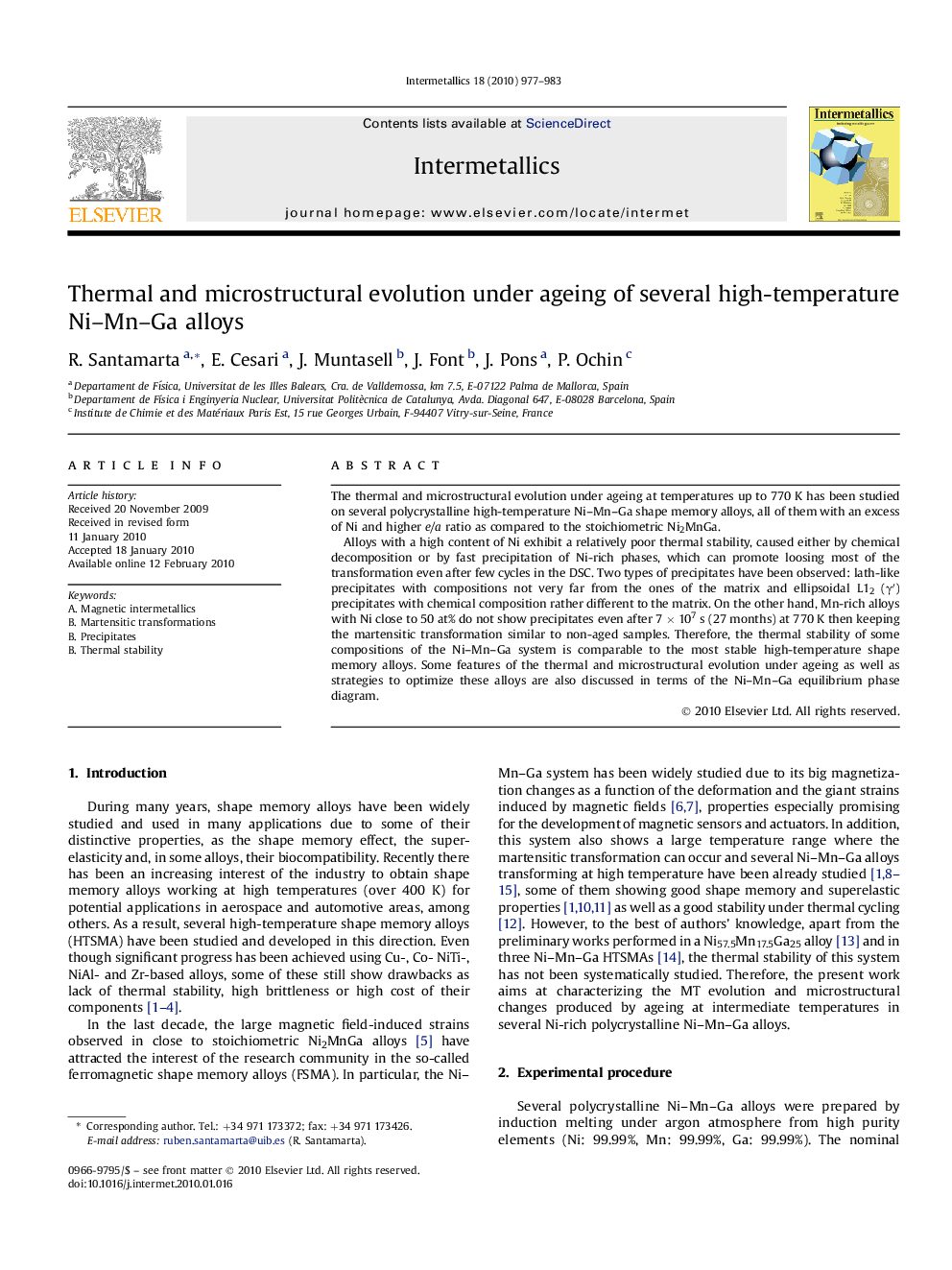| Article ID | Journal | Published Year | Pages | File Type |
|---|---|---|---|---|
| 1601006 | Intermetallics | 2010 | 7 Pages |
Abstract
Alloys with a high content of Ni exhibit a relatively poor thermal stability, caused either by chemical decomposition or by fast precipitation of Ni-rich phases, which can promote loosing most of the transformation even after few cycles in the DSC. Two types of precipitates have been observed: lath-like precipitates with compositions not very far from the ones of the matrix and ellipsoidal L12 (γâ²) precipitates with chemical composition rather different to the matrix. On the other hand, Mn-rich alloys with Ni close to 50 at% do not show precipitates even after 7 Ã 107 s (27 months) at 770 K then keeping the martensitic transformation similar to non-aged samples. Therefore, the thermal stability of some compositions of the Ni-Mn-Ga system is comparable to the most stable high-temperature shape memory alloys. Some features of the thermal and microstructural evolution under ageing as well as strategies to optimize these alloys are also discussed in terms of the Ni-Mn-Ga equilibrium phase diagram.
Keywords
Related Topics
Physical Sciences and Engineering
Materials Science
Metals and Alloys
Authors
R. Santamarta, E. Cesari, J. Muntasell, J. Font, J. Pons, P. Ochin,
